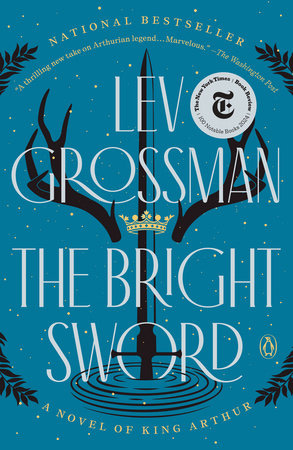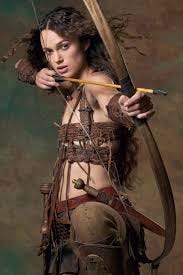Summer Reading: The Massachusetts Medievalist Revels in Grossman’s Bright Sword
Lev Grossman’s latest novel, The Bright Sword (Viking Press, 2024) is a deliciously satisfying summer read. The blurbs on the book jacket and the web are spot on: the novel is indeed a “King Arthur for the twenty-first century” and the Massachusetts Medievalist is here to tell you why.
(Edwin Austin Abbey, The Arthurian Round Table, c.1895, Abbey Room, Boston Public Library)
First off, Grossman knows his literary traditions. He’s deliberately and humbly placing himself in the lineage of Geoffrey of Monmouth, Malory, Tennyson, White, and the rest. He knows deeply what academics call “The Matter of Britain” but one of my students once called “The Arthur Cinematic Universe” (a much better term, obviously). For those in the know, multiple Easter Eggs await your joyous discovery.
Grossman both adheres to and changes that literary tradition - for instance, his hero is Collum, a seemingly-standard-issue bastard orphan with big dreams, a cloudy past, and ferocious sword arm. Collum wants to engage in the standard-issue adventure of presenting himself to the Round Table at Camelot to be tested with an adventure and then knighted by King Arthur. He even has a standard-issue grumpy older man with wisdom and skills to coach him before his departure for Arthur’s court.
BUT Collum’s arrived at Camelot too late. The usual Arthur Cinematic Universe is already over: Arthur is dead, as are most of the A-list knights; Guinevere is in a nunnery; potential enemies, both human and supernatural, are massing on the borders. In the great hall of Camelot, Collum finds only a small, tattered group of drunken survivors still loyal to the dead king. After various tests and arguments, they allow him to join them as they start the quest to find the next king, or the next sword in the stone, or the next version of Arthur (they’re not sure exactly what they’re looking for, which seems entirely postmodern to me!).
That group of knights is part of Grossman’s claim to the twenty-first century. He leans into recent academic investigations regarding the “multicultural Middle Ages,” the ongoing inquiry attempting to remove the white washing of the European Middle Ages imposed by nineteenth- and twentieth-century medieval scholarship. Rather than a traditional group of men simply assumed to be white and straight, Grossman’s merry band of knights includes a gay man, a transman, a brown man, and a supernaturally long-lived man who pulled a Rumpelstiltskin when he went into a magic mound during the Roman Empire and emerged into medieval Britain.
Each of these knights gets a “Tale of” chapter wherein he is the main character; unlike a more standard Arthurian collection, these narratives have important bearing on the main plot of Collum and his new companions trying to figure out the future of the decimated country. The “Tales” of Bedivere, Palomides, Scipio, Dagonet, and Dinadan are not picaresque filler but instead crucial to understanding their characters and motivations.
Furthermore, Grossman builds on the current trend of “retellings” to provide his version of events on the terrible night when Camelot fell, when Mordred (allegedly) caught Lancelot and Guinevere committing adultery and precipitated the battle of Camlann, where both Arthur and Mordred die. No spoilers, so it must suffice to state that Grossman does not change the bare facts of the narrative and his resolution is superbly surprising and intriguing.
Grossman is the only author I know who baldly acknowledges that Uther raped Igraine, and his Arthur has to try to reconcile the fact that his existence comes from sexual assault. It’s a refreshing alternative to the more traditional presentation of Uther “visiting Igraine in the likeness of Gorlois” or some such euphemistic nonsense. In a flashback, Arthur says, “My father killed my mother’s husband and then he raped her. And Merlin helped, and God watched and did nothing. That’s how I was born. She must’ve hated him like poison” (84).
I suspect that Grossman and I grew up reading many of the same Arthurian books and watching many of the same Arthurian movies. Like Keira Knightley, Grossman’s Guinevere is an expert archer. He explicitly pays homage to The Once and Future King and its Disney version, The Sword in the Stone. I found covert and overt references to Hamilton (bastard orphans, anyone?), The Odyssey, Beowulf, Oedipus Rex, The Princess Bride, Macbeth, Monty Python and the Holy Grail, and The Dark is Rising, in addition to the standard Arthur texts (Chrétien de Troyes, Chaucer, Marie de France, etc). I also suspect homage to at least one Arthurian-inspired video game, especially when Collum is pushed into a well as part of his Round Table hazing, but I don’t have enough experience there to be sure.
Enjoy this excellent entertainment, a literary summer blockbuster with adventure, romance, supernatural events, and an appealing coming of age story. Please leave a comment to add to the list of cultural references that I missed!





